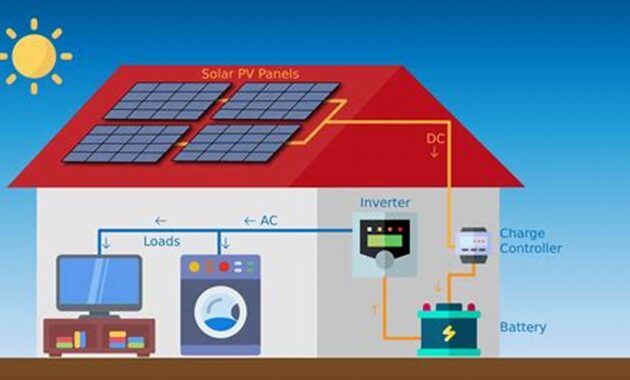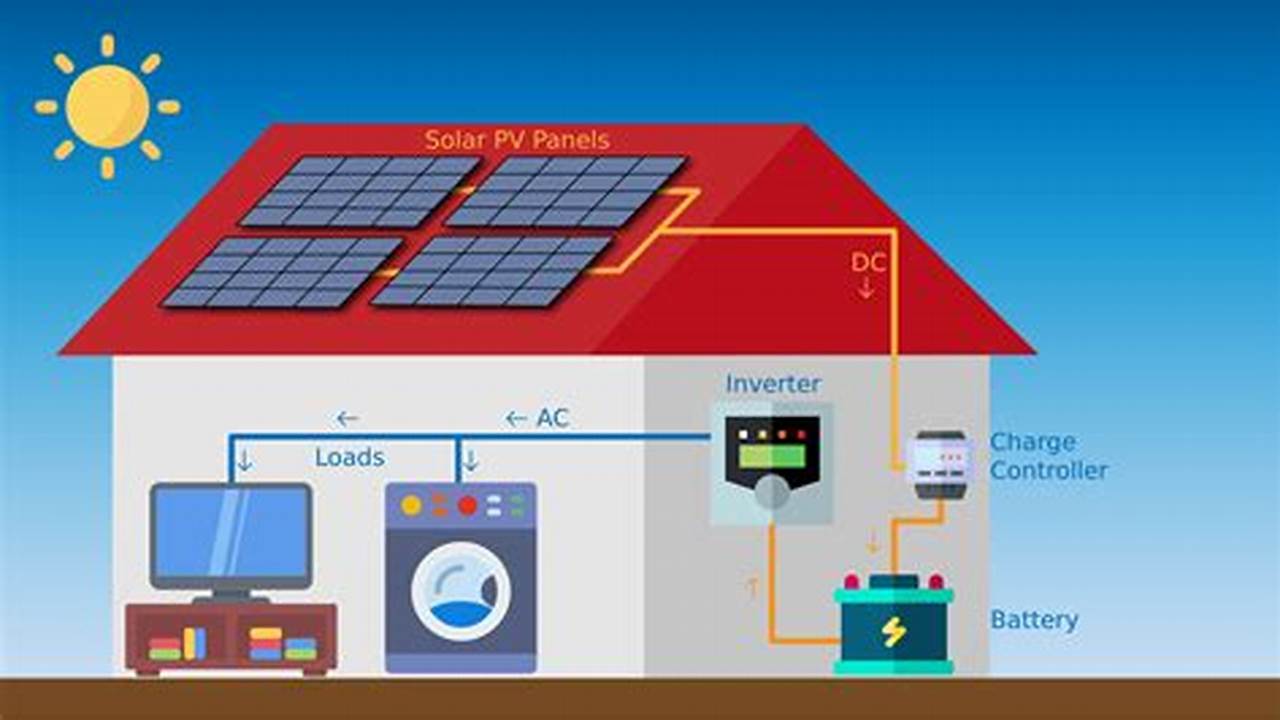
An off-grid solar system is a standalone power system that provides electricity to homes and businesses that are not connected to the electrical grid. The system typically includes solar panels, a battery bank, an inverter, and a charge controller. The solar panels convert sunlight into electricity, which is then stored in the battery bank. The inverter converts the DC electricity from the battery bank into AC electricity, which is then used to power appliances and lights. The charge controller regulates the flow of electricity between the solar panels, battery bank, and inverter.
Off-grid solar systems are becoming increasingly popular as a way to reduce reliance on fossil fuels and save money on energy bills. They are also a good option for homes and businesses in remote areas that do not have access to the electrical grid. Off-grid solar systems can be used to power a variety of appliances and lights, including refrigerators, lights, TVs, and computers. They can also be used to power water pumps, tools, and other equipment.
If you are considering installing an off-grid solar system, it is important to consult with a qualified solar installer to determine the best system for your needs. The installer will help you determine the size of the solar array, the capacity of the battery bank, and the type of inverter that you need. They will also help you with the installation and maintenance of the system.
FAQs on Off-Grid Solar Systems
Off-grid solar systems offer numerous advantages, but understanding how they function and addressing common concerns is crucial. This FAQ section aims to provide clear and concise answers to frequently asked questions about off-grid solar systems.
Question 1: How does an off-grid solar system work?
An off-grid solar system generates electricity from sunlight without relying on the electrical grid. Solar panels convert sunlight into DC electricity, which is stored in batteries. An inverter converts the DC electricity into AC electricity, which is used to power appliances and devices.
Question 2: What are the benefits of an off-grid solar system?
Off-grid solar systems offer several benefits, including energy independence, cost savings on electricity bills, reduced carbon footprint, and increased resilience during grid outages.
Question 3: What components are needed for an off-grid solar system?
A typical off-grid solar system consists of solar panels, batteries, an inverter, a charge controller, and mounting equipment.
Question 4: How do I determine the size of an off-grid solar system I need?
The size of an off-grid solar system depends on factors such as energy consumption, available sunlight, and desired level of energy independence. It’s recommended to consult with a qualified solar installer for a customized assessment.
Question 5: How much does an off-grid solar system cost?
The cost of an off-grid solar system varies depending on system size, component quality, and installation complexity. It’s important to consider both upfront and ongoing costs, including maintenance and battery replacement.
Question 6: How long does an off-grid solar system last?
With proper maintenance, an off-grid solar system can have a lifespan of 25 years or more. Solar panels typically have a 25-year warranty, while batteries may need to be replaced every 5-10 years.
Summary: Off-grid solar systems provide reliable and sustainable electricity, reducing reliance on fossil fuels and increasing energy independence. Understanding how these systems work and addressing common concerns can help individuals make informed decisions about adopting off-grid solar solutions.
Transition to the next article section: For further insights into off-grid solar systems, their applications, and the benefits they offer, continue reading the following sections of this article.
Tips for Optimizing Off-Grid Solar System Performance
Harnessing solar energy for off-grid electricity requires careful planning and maintenance. Here are several tips to ensure your system operates efficiently and reliably:
Tip 1: Determine Your Energy Needs: Assess your energy consumption patterns to determine the appropriate size and capacity of your solar system. Consider factors such as the number of appliances, lighting, and potential future expansion.
Tip 2: Choose High-Quality Components: Invest in durable and efficient solar panels, batteries, and inverters. Reputable brands and warranties provide assurance of performance and longevity.
Tip 3: Optimize Panel Placement: Position solar panels facing south (in the Northern Hemisphere) or north (in the Southern Hemisphere) for maximum sun exposure. Avoid shading and ensure proper ventilation to prevent overheating.
Tip 4: Monitor System Performance: Regularly check your system’s performance using monitoring tools or apps. This allows you to identify any issues or inefficiencies and address them promptly.
Tip 5: Perform Regular Maintenance: Clean solar panels periodically to remove dust and debris. Inspect batteries and connections for any signs of damage or corrosion. Schedule professional maintenance as recommended by the manufacturer.
Summary: By following these tips, you can maximize the performance and longevity of your off-grid solar system. Remember to consider your energy needs, choose quality components, optimize panel placement, monitor system performance, and perform regular maintenance to ensure a reliable and efficient electricity supply.
Transition to the article’s conclusion: As you continue exploring the world of off-grid solar systems, remember that proper planning, quality components, and ongoing maintenance are key to harnessing the sun’s energy effectively.
Conclusion
In exploring “how does off grid solar system work,” we have gained insights into the principles, components, and benefits of these self-sufficient electricity solutions. Off-grid solar systems empower individuals and communities to generate clean, renewable energy, reducing reliance on fossil fuels and promoting energy independence.
As technology advances and costs decline, off-grid solar systems will continue to play a crucial role in the transition to a sustainable energy future. By embracing this technology, we can harness the sun’s boundless energy, mitigate climate change, and create a more resilient and equitable energy landscape.
